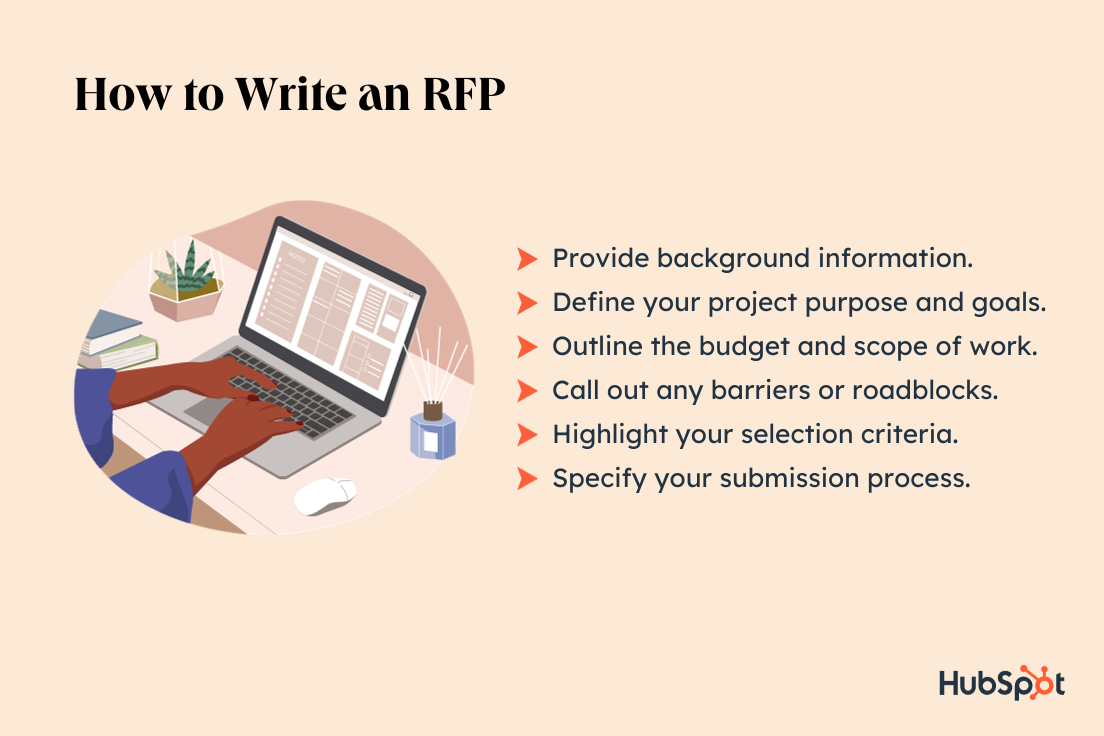

Imagine reading a post about request for proposals (RFP). The goal is definitely to cut to the chase as quickly as possible.
Speaking as someone who has spent about five years working as a marketing consultant for three different agencies, I can say that this isn’t always the most thrilling process from my experience of both creating RFPs and submitting bids.
But don’t fret. I’m here with several tips to make your RFP writing process less of a chore (maybe even a bit enjoyable).
Quick navigation:
Before we delve deeper, let me clarify the difference between RFP and RFI — just to avoid any confusion in our world brimming with acronyms.
RFP vs. RFI
Companies utilize a request for information (RFI) to explore available solutions in the market. An RFP, or request for proposal, invites vendors to bid, thereby facilitating the final decision-making process for a specific project for the business.
In simpler terms: If you have a project that requires outside assistance and know the kind of vendor you’re looking for, you can use an RFP to scout for options.
For instance, while working at a small health communication firm, a government client tasked us with creating an educational video series for them. As we lacked the necessary resources to execute this in-house, I developed an RFP to call for proposals from video production companies.
Let’s retain this example as I guide you through the RFP drafting process.
Steps to Write an RFP
- Provide background information.
- Define your project purpose and goals.
- Prioritize budget and define the work scope.
- Address potential hindrances or obstacles.
- Express your selection criteria.
- Detail your submission process.
Don’t forget, we’re using this illustrative example throughout this guide: AJC Health formulates an RFP on behalf of a government client, DoGoodGov, looking for services related to educational video production.
(The company names are fictitious, but the experience is authentic … I assure you.)
1. Supply Background Information
Start your RFP with an introduction and brief company overview. It sets the context for prospective vendors, facilitating a better understanding of their potential collaborator.
Expert Tip: I recommend keeping this section short and sweet. Simply introduce your organization, your mission, and the products and services you offer.
Example:
AJC Health, based in Washington, DC, is a healthcare communication firm with a mission to empower young adults and teens to lead healthier lifestyles.
We have been helping clients accomplish their targets for over a decade by delivering marketing and communication services, which include campaign development, copywriting, and support for multimedia projects.
2. Specify Your Project Purpose and Goals
Once you have introduced yourself, provide an overview of the project. This is your chance to describe your aims and required expertise.
This section can help vendors better comprehend your priorities, enabling them to tailor their proposals accordingly.
Expert Tip: Ensure this section is straightforward and succinct. Concentrate on the RFP’s purpose, the kind of vendors you seek, and your goals. You’ll have the opportunity to provide specific work scope details later.
Example:
This Request for Proposals (RFP) is intended to invite businesses specializing in video production, live action, animation, and multimedia for educational purposes to present their proposals.
We are currently scouting for vendors capable of supporting the development of a public health video series for DoGoodGov. Our objective is to boost brand awareness, drive web traffic, and enhance our YouTube marketing ROI.


